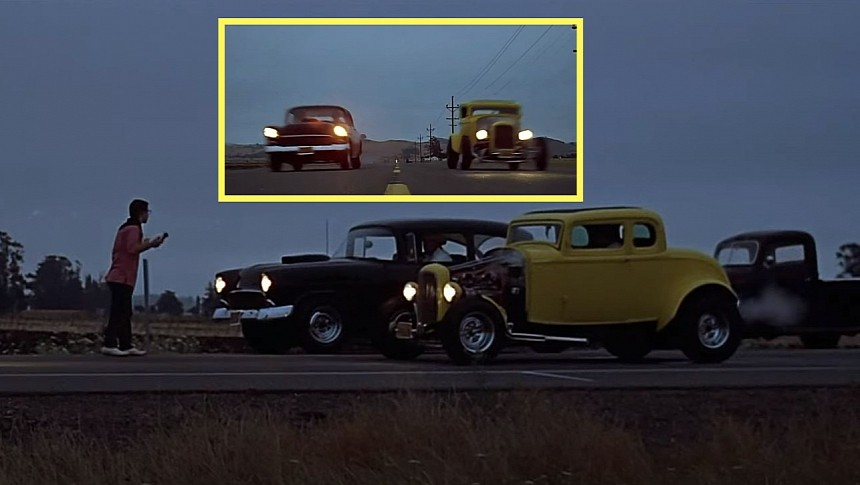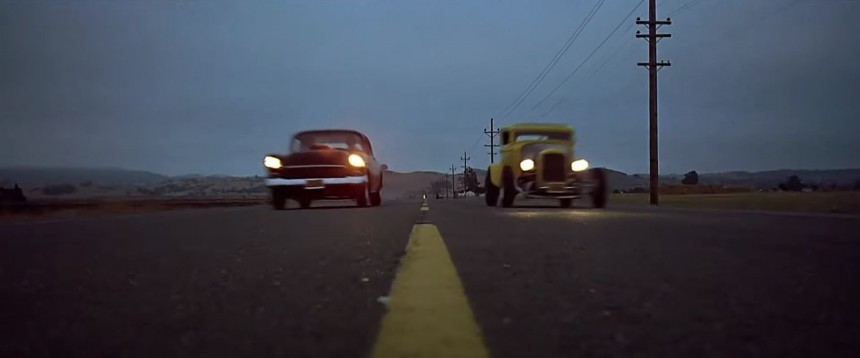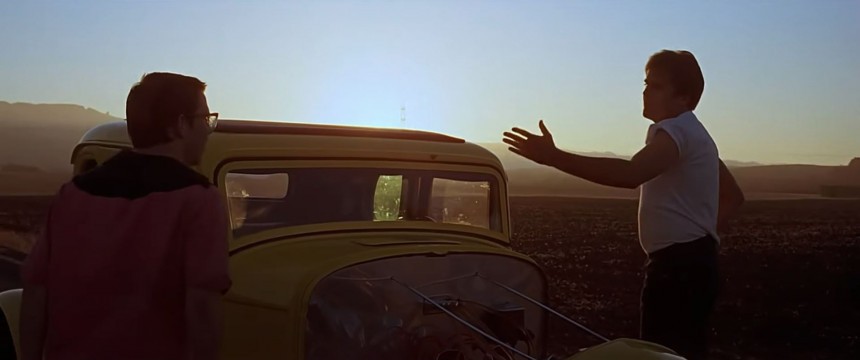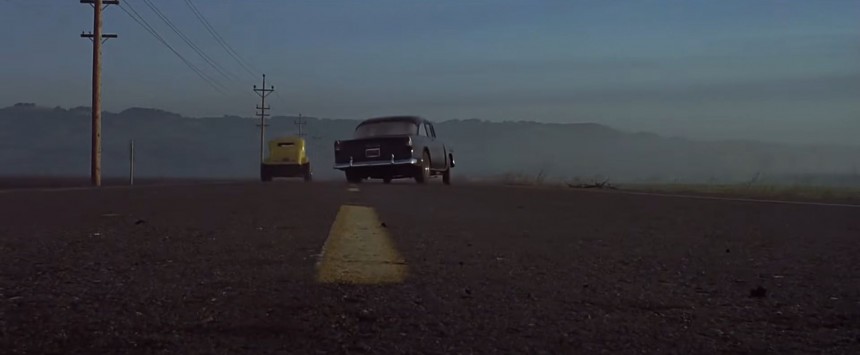Many Americans today agree that the '60s were a great time to be alive. The world was recovering from yet another (and hopefully final) global conflict. Most economies were doing good, while America led the charge regarding the development of the middle class and cementing its position as a global powerhouse. Economic prosperity and no international health challenges made many happy. And movies like American Graffiti made sure that period remained embedded in the minds and hearts of today's nostalgic people.
It is widely agreed that the 1960s represented the dawn of a golden age for most Americans. The smell of prosperity was in the air, and people were ready to put the challenges of the Second World War behind them. It was time to build and reconnect. Children of that period lived in technicolor, while, just a decade earlier, most Americans thought they would never escape the black and white of the '50s.
Could the 1960s have been better? In short, yes. The decade began with great music, amazing and experimental literature, the invention of the birth control pill, and the untimely death of President John F. Kennedy. It continued with non-violent civil rights movements, the launch of iconic and period-defining vehicles like the Corvette Sting Ray (not a spelling mistake, that's how it was written originally), the Pontiac GTO, or the Ford Mustang, and students protesting the Vietnam War. But the '60s ended on a high note with "one giant leap for mankind" by having Neil Armstrong make the first human step on the Moon.
Thus, it's not surprising that 29-year-old director George Lucas decided to show an important part of what it was like growing up as a teenager and maturing in America during that decade. Young adults of the '70s were put through quite a lot of changes a decade earlier when they had to learn and understand a challenging recent past, deal with an ever-changing socio-economic environment, and be ready for an accelerated way of living without getting caught up in distractions.
And what better way to showcase all this than through a movie?
The comedy-drama film released in 1973 was set in Modesto, California. It showed the struggles of many teenagers who were either moving away for college or starting adulthood. Since cars were very important back then and carried a deep societal significance, the movie also encapsulated a glimpse of the culture revolving around automobiles.
Paul Le Mat plays John Milner, one of the main characters who is reluctant to give in to adulthood. He spends most of his time getting better at drag racing or with a young girl known as Carol. As expected, the actor portrays a young guy with a somewhat stifling attitude.
Harrison Ford, on the other hand, plays Bob Falfa. He gets to be a part of this emotionally-charged story as a supporting character. His appearance may be swift, but the interactions with John Milner eventually led to the movie's most iconic scene – the drag race. It was this moment that helped Ford gain popularity in Hollywood. His disruptive role as a brazen outsider amplified the storyline and gave the audience a memorable experience.
The two first met while cruising through the city at night, which only led to a lot of trash-talking. "You're supposed to be the fastest thing in the valley. But that can't be your car. It must be your mama's car," said Falfa.
Milner didn't spare any moment and told Falfa he drove a "field car," the nickname given back then to vehicles that spread manure on arable land.
The witty back-and-forth continued until the inevitable happened – an improptu drag race. The first one was within the city and represented just a taste of what would happen.
Harrison Ford's character starts the drag race in second place and seems to have trouble controlling the Chevy, while Paul Le Mat's John Milner gets ahead with no worries. The two find themselves as equals for a couple of yards, but Falfa loses control of the vehicle and, subsequently, the race. A tire blew, leading to the car rolling over into a ditch. The Ford burst into flames moments later.
Milner returns to check on his rival and finds him arguing with the passenger, none other than Laurie Henderson, the young sister of Curt Henderson. Fortunately, both were ok and got out just in time. However, Falfa displayed a minor injury to his hand and a big blow to his ego.
But in the end, the winner realizes he didn't get anything because time didn't stop, and he had to get it together for the next stage of his life. Cruising and rock roll culture had to be left behind if he wished to level up.
Could the 1960s have been better? In short, yes. The decade began with great music, amazing and experimental literature, the invention of the birth control pill, and the untimely death of President John F. Kennedy. It continued with non-violent civil rights movements, the launch of iconic and period-defining vehicles like the Corvette Sting Ray (not a spelling mistake, that's how it was written originally), the Pontiac GTO, or the Ford Mustang, and students protesting the Vietnam War. But the '60s ended on a high note with "one giant leap for mankind" by having Neil Armstrong make the first human step on the Moon.
Thus, it's not surprising that 29-year-old director George Lucas decided to show an important part of what it was like growing up as a teenager and maturing in America during that decade. Young adults of the '70s were put through quite a lot of changes a decade earlier when they had to learn and understand a challenging recent past, deal with an ever-changing socio-economic environment, and be ready for an accelerated way of living without getting caught up in distractions.
Enter American Graffiti
Starring Richard Dreyfuss, Ron Howard, Paul Le Mat, Charles Martin Smith, and a young Harrison Ford, the production had a budget of $777,000 ($5.3 million in today's money). It returned over $140 million ($962 million adjusted to inflation) at the box office. Just by this metric alone, one can comfortably assume the audience received the movie pretty well.The comedy-drama film released in 1973 was set in Modesto, California. It showed the struggles of many teenagers who were either moving away for college or starting adulthood. Since cars were very important back then and carried a deep societal significance, the movie also encapsulated a glimpse of the culture revolving around automobiles.
Paul Le Mat plays John Milner, one of the main characters who is reluctant to give in to adulthood. He spends most of his time getting better at drag racing or with a young girl known as Carol. As expected, the actor portrays a young guy with a somewhat stifling attitude.
A simple, yet entertaining rivalry
John Milner drove a yellow 1932 Ford Coupe with some modifications so competing wouldn't result in losses, while Bob Falfa was behind the wheel of a 1955 Chevrolet 210 that boasted a more sophisticated tuning setup.The two first met while cruising through the city at night, which only led to a lot of trash-talking. "You're supposed to be the fastest thing in the valley. But that can't be your car. It must be your mama's car," said Falfa.
Milner didn't spare any moment and told Falfa he drove a "field car," the nickname given back then to vehicles that spread manure on arable land.
The witty back-and-forth continued until the inevitable happened – an improptu drag race. The first one was within the city and represented just a taste of what would happen.
A lesson to remember
They agreed to put all the claims to the test on Modesto's Paradise Road, a long and remote stretch of tarmac that was ideal for such illegal confrontations. In reality, the scene was shot on Frates Road in Petaluma, California, less than two hours away from Paradise Road.Harrison Ford's character starts the drag race in second place and seems to have trouble controlling the Chevy, while Paul Le Mat's John Milner gets ahead with no worries. The two find themselves as equals for a couple of yards, but Falfa loses control of the vehicle and, subsequently, the race. A tire blew, leading to the car rolling over into a ditch. The Ford burst into flames moments later.
Milner returns to check on his rival and finds him arguing with the passenger, none other than Laurie Henderson, the young sister of Curt Henderson. Fortunately, both were ok and got out just in time. However, Falfa displayed a minor injury to his hand and a big blow to his ego.
But in the end, the winner realizes he didn't get anything because time didn't stop, and he had to get it together for the next stage of his life. Cruising and rock roll culture had to be left behind if he wished to level up.
















